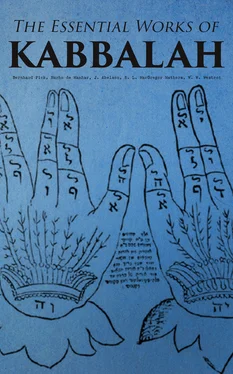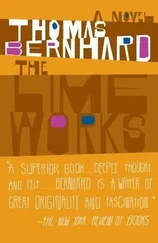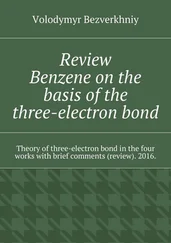ו = 6 + ה = 5 + נ = 50 + ה = 5 + ש = 300 + ל = 30 + ש = 300 + ה = 5 = 701; and the same number yields the words אלו מיכאל גכריאל ורפאל, viz. = א = 1 + ל = 30 + ו = 6 + מ = 40 + י = 10 + כ = 20 + א = 1 + ל = 30 + ג = 3 + כ = 2 + ר = 200 + י = 10 + א = 1 + ל = 30 + ו = 6 + ר = 200 + פ = 80 + א = 1 + ל = 30 =701.
A like figuring we find in the Epistle of Barnabas, ch, ix, with reference to the 318 servants of Abraham, mentioned in Gen. xiv. 14. The author lays stress upon the fact that in the Hebrew the "eighteen" are mentioned first, and the "three hundred" afterwards. In the eighteen expressed by the Greek letters I = 10 and H = 8 he sees Jesus (ΙΗΣΟΥΣ), and in the three hundred he sees by the letter T — 300, the cross.
With this canon may be compared the "number-oracle," by means of which one can tell from the number of the letters of the name and the dates of the birth important years and days in the life of a man. Thus, for instance, Emperor William I, was born March 22, 1797; 3 + 22 + 1797 + 7 (number of the letters of the name= 1829, the year of marriage; 1829 +1+8 + 2 + 9 = 1849, campaign to Baden; 1849 + 1 + 8 + 4 + 9= 1871, coronation as emperor; 1871 + 1 +8 + 7 + 1 = 1888, year of death. Napoleon III, born 4, 20, 1808; 4 + 20+1808 + 8 (number of the letters of the name) = 1840, the coup at Boulogne; 1840+1+8 + 4 + 0= 1853, first year as emperor; 1853 + 1+8 + 5 + 3 = 1870; end of his rule. 14
2. Notarikon (from the Latin notarius, a short-hand writer, one who among the Romans belonged to that class of writers who abbreviated and used single letters to signify whole words), is employed when every letter of a word is taken as an initial or abbreviation of a wrord. Thus, for instance, every letter of the Hebrew first word in Genesis, 15is made the initial of a word, and from "in the beginning" we obtain "in the beginning God saw that Israel should accept the law"; or the word "Adam" (ADM) is made "Adam, David, Messiah." Sometimes very curious and ingenious combinations are derived from this system. For instance the word passim 16used in the passage "And he made a coat of (passim) many colors" (Gen. xxxvii. 3) is made to indicate the misfortunes which Joseph experienced in being sold by his brethren to Potiphar, Merchants, Ishmaelites, Midianites. 17
It appears that the Christian fathers sometimes made use of the same rule; as for instance Christ has been called by them IX0Y2, "fish," because these letters are the initials of the Greek words "Jesus Christ, the Son of God, the Saviour." 18Thus St. Augustine tells us {Be civ. Dei, XVIII, 23) that when they were speaking about Christ, Flaccianus, a very famous man, of most ready eloquence, and much learning, produced a Greek manuscript, saying that it was the prophecies of the Erythrian sibyl. In this he pointed out a certain passage that had the initial letters of the lines so arranged that those words could be read in them.
Then he went on and gave these verses, of which the initial letters yield that meaning, and says, "But if you join the initial letters of these five Greek words, they will make the word ichthus, 19that is 'fish,' in which word Christ is mystically understood, because he was able to live, that is, to exist, without sin in the abyss of this mortality as in the depth of waters." It is worthy of notice that Augustine only gives twenty-seven lines 20of the thirty-four, as contained in the Oracula Sibyllina, VIII, 217 ff., where the acrostic reads: Jesus Christ, Son of God (the) Saviour, (the) Cross. 21
In its full form it is also given by Eusebius in the Life of the Blessed Emperor Constantine. For the benefit of the reader we subjoin Neale's translation of the acrostic as given in the Christian Remembrancer, October, 1861, p. 287:
"Judgment at hand, the earth shall sweat with fear.
Eternal king, the Judge shall come on high;
Shall doom all flesh; shall bid the world appear
Unveiled before his Throne. Him every eye
Shall, just or unjust, see in majesty.
"Consummate time shall view the Saints assemble
His own assessors, and the souls of men
Round the great judgment seat shall wait and tremble
In fear of sentence, and the green earth then
Shall turn to desert. They that see that day
To moles and bats their gods shall cast away.
"Sea, earth, and heaven, and hell's dread gates shall burn;
Obedient to their call, the dead return;
Nor shall the judge unfitting doom discern.
"Of chains and darkness to each wicked soul:
For them that have been good, the starry pole.
"Gnashing of teeth, and woe, and fierce despair
Of such as hear the righteous Judge declare
Deeds long forgot, which that last day shall bare.
"Then when each darkened breast He brings to
sight, Heaven's stars shall fall, and day be changed to night;
Effaced the sun-ray, and the moon's pale light.
"Surely the valleys He on high shall raise;
All hills shall cease, all mountains turn to plain;
Vessels shall no more pass the watery ways;
In the dread lightning parching earth shall blaze,
Ogygian rivers seek to flow in vain.
Unutterable woe the trumpet blast,
Re-echoing through the ether, shall forecast.
"Then Tartarus shall wrap the world in gloom,
High chiefs and princes shall receive their doom,
Eternal fire and brimstone for their tomb.
"Crown of the world, sweet wood, salvation's horn,
Rearing its beauty, shall for man be born,
O wood, that Saints adore, and sinners scorn!
So from twelve fountains shall its light be poured;
Staff of the Shepherd, and victorious sword."
We may also state that words of those verses which are regarded as containing a peculiar recondite meaning are ranged in squares in such a manner as to be read either vertically or boustrophedonally beginning at the right or left hand. Again the words of several verses are placed over each other, and the letters which stand under each other are formed into new words. This is especially seen in the treatment of three verses in Exod. xiv. 19-21 (each containing 72 letters), which are believed to contain the three Pillars of the Sephiroth and the Divine Name of seventytwo words. Now, if these three verses be written out one above the other, the first from right to left, the second from left to right, and the third from right to left, they will give 12 columns of three letters each. Then each column will be a word of three letters, and as there are 72 columns, there will be 72 words of three letters, each of which will be the 72 names of the Deity. By writing the verses all from right to left, instead of boustrophedonally, there will be other sets of 72 names obtainable. The reader who is interested in these niceties will find ample information in Bartolocci, Bibliotheca Magna Rabbinicia, IV, pp. 230 ff.
3. Temurah or permutation.—According to certain rules, one letter is substituted for another letter preceding or following it in the alphabet, and thus from one word another word of totally different orthography may be formed. Thus the alphabet is bent exactly in the middle, and one half is put over the other; and then by changing alternately the first letter or the first two letters at the beginning of the second line, twenty-two permutations are produced. These are called the "Table of the Combinations of Tziruph."
For example's sake we give the method called Albath, thus:
A B G D H V Z Ch T Y K L Th Sh R Q Tz P Ay S N M
The method abgath is thus exemplified:
A G D H V Z Ch T Y K L B Th Sh R Q Tz P Ay S N M
The names of the twenty-two permutations are: Albath, Abgath, Agdath, Adbag, Ahbad, Avba, Azbav, Achbaz, Atbach, Aibat, Achbi, Albach, Ambal, Anbam, Asban, Aaybas, Afba, Azbaf, Akbaz, Arbak, Ashbar, Athbash. To these must be added as (23) Abgad; (24) Albam.
Читать дальше












